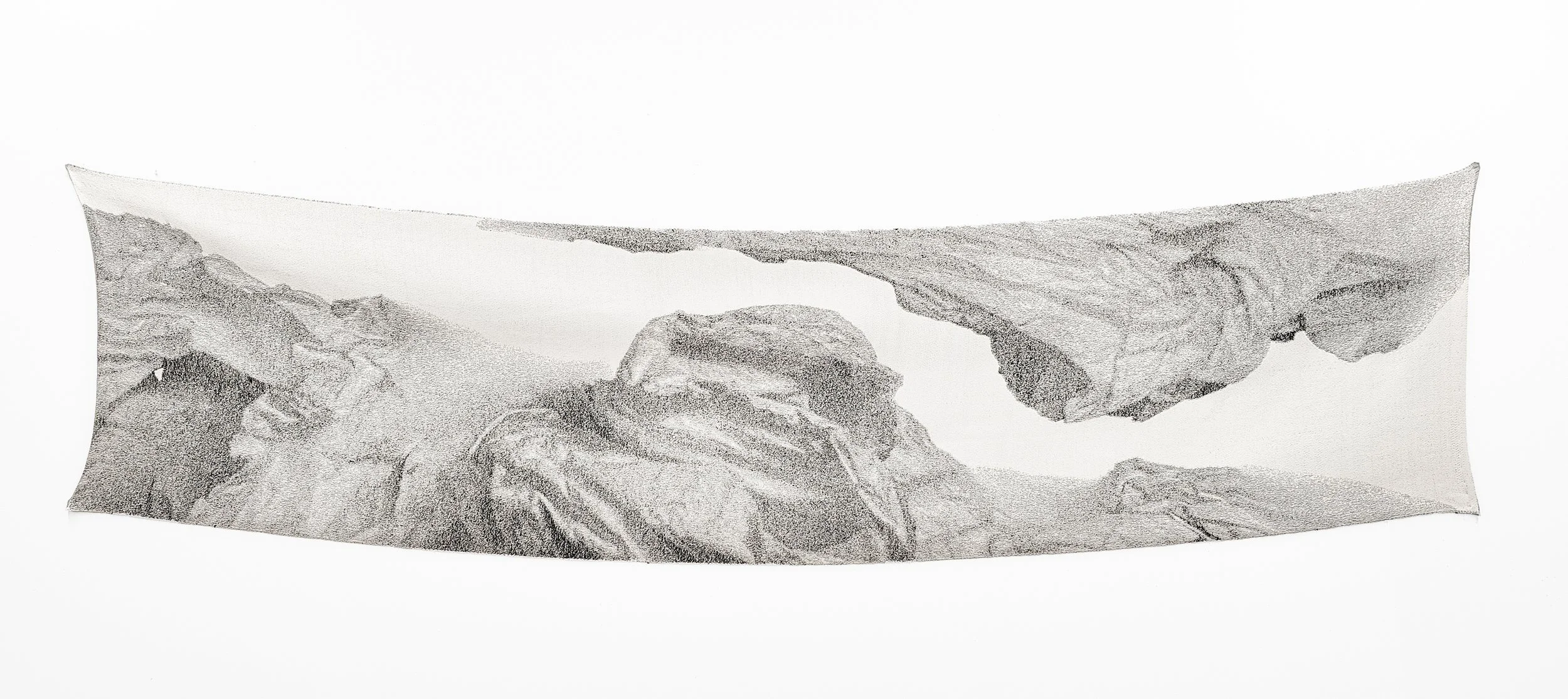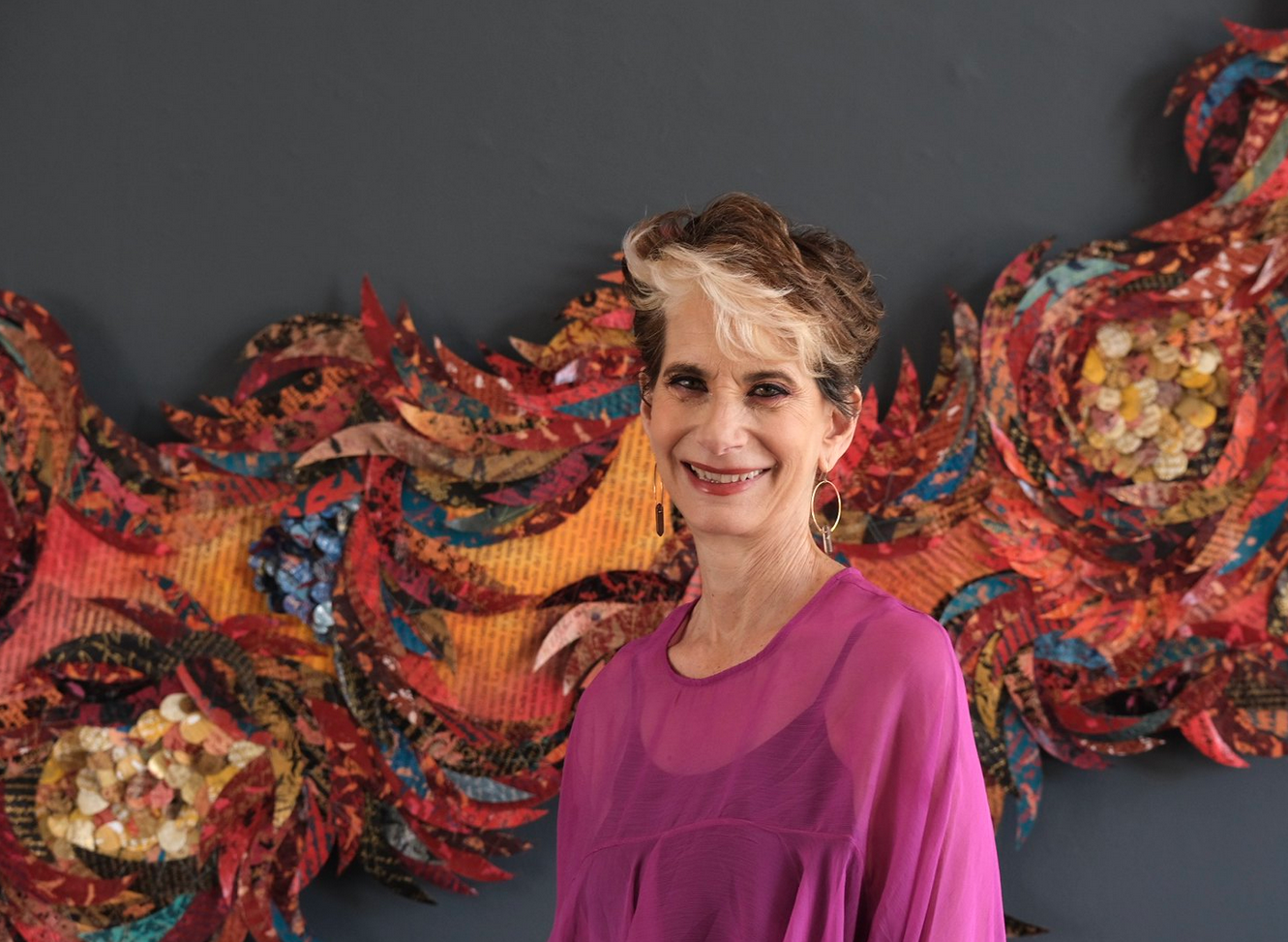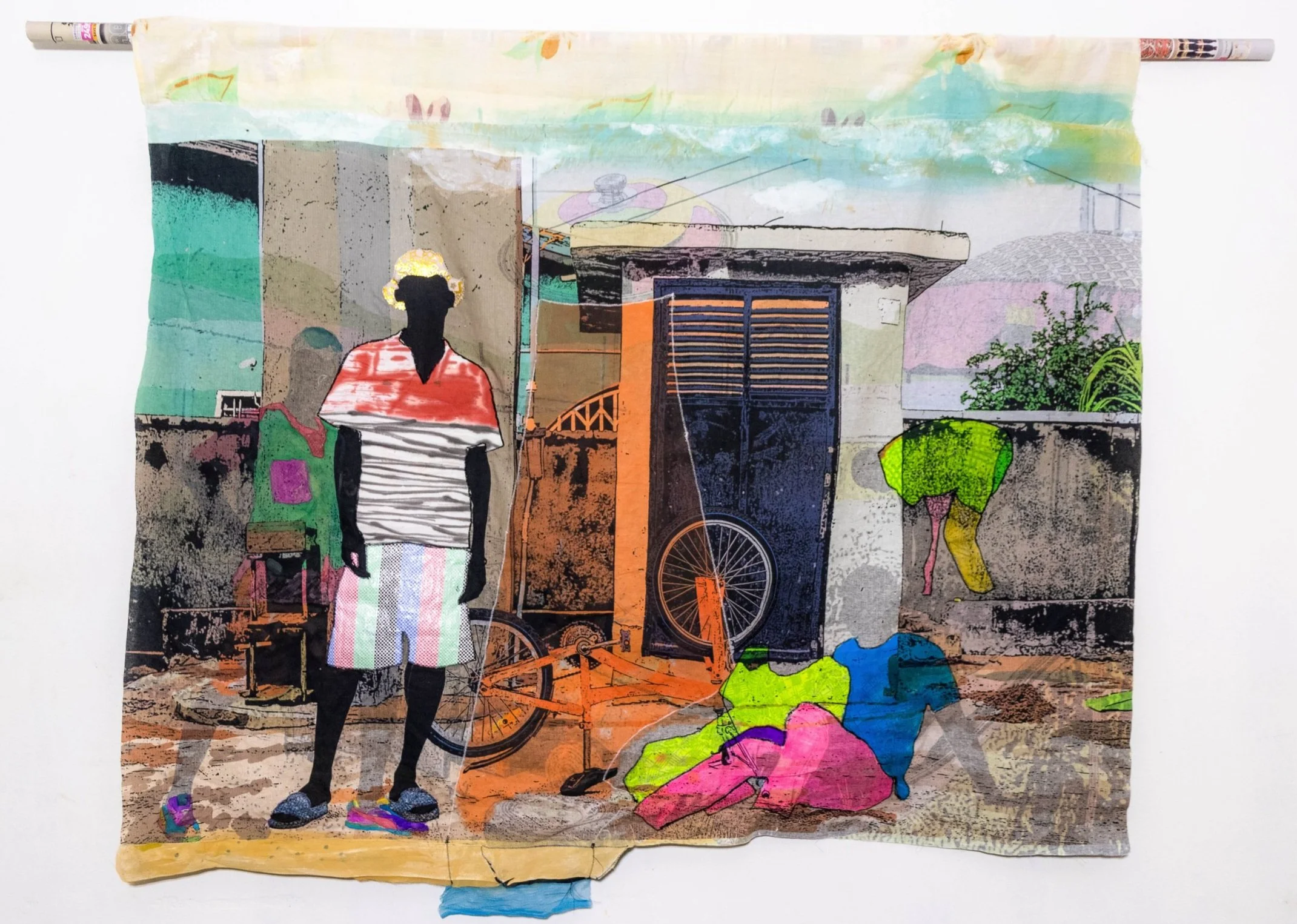INTERVIEW | Nouli Omer
10 Questions with Nouli Omer
Al-Tiba9 Art Magazine ISSUE12 | Featured Artist
Nouli Omer, Born in 1960 in Tel Aviv, Israel. Nouli is a multidisciplinary artist, actress, writer, and comedian. In 1982, she studied at the Nissan Nativ Acting Studio and received an Excellence Scholarship. Her first break to public recognition was in the comic duo Debbie and Nouli; the duo operated from 1987 to 1997 with three entertainment shows. In 1998, she first exhibited a solo exhibition at Amalia Arbel Gallery in Tel Aviv. Since then, she has exhibited in dozens of group exhibitions and solo exhibitions in Israel and Europe. Over the years and up to this day, as an autodidact visual artist, her work ranges from drawing to embroidery, assemblages, lighting fixtures, video, and drawing on plates. Alongside her activities as an artist in the visual - art field, she continues throughout the years to act in theater, television series, and cinema, as well as writing and publishing books, personal columns, poems, short stories in magazines, and more.
Nouli Omer - Portrait
ARTIST STATEMENT
“I am a multidisciplinary artist who creates from a full, free, and authentic inner space. I express myself through visual art, writing, and acting. Freedom from consensus and artistic independence lie at the center of my creation as I seek to convey a social critique, whether it is a plastic or a theatrical work. I am nourished by my impressions of what’s happening around me, and I work intuitively. Over the years and up to this day, in visual art, my work has ranged from drawing to embroidery, assemblages, lighting fixtures, mobiles, magnets, video, and drawing on plates. Thoughts and feelings, whether they are criticism or love and wonder for beauty and nature - are translated into a very colorful expression in order to glorify the desire for life. I aspire to translate my criticism through humor. The choice of plentiful, overflowing color in my work reflects and intensifies my joie de vivre. In Israel, I've extensively exhibited my embroideries in many contemporary art venues.” - Nouli Omer
Wounded, imbroidery threads on jute fabric, 50x40 cm, 2020 © Nouli Omer
Get your limited edition copy now
INTERVIEW
You are a multidisciplinary artist and worked as an actress, writer, and comedian. How did you start getting involved with visual art?
Well, I started drawing when I was three years old, and since then, I haven't stopped engaging in visual art. When I was a little girl, I painted with oil pastels, and looking at those paintings today - I find the same passion for colors that remains to this day. At the age of 20, I studied at the Academy of Music in Tel Aviv and mainly composed melodies for my lyrics and those of other poets. Later on, I graduated from "Nissan Nativ acting studio," and after graduation, I performed as a comedian together with my best friend, Debbie, for ten years. Then, I felt I had to channel my feelings/thoughts/opinions performing on stage, and I knew so well and found new channels to express myself. In a year, I created about 40 works – including paintings, cutouts, mobiles, and drawings.
And so, in 1998, I had my first solo exhibition in Tel Aviv. This exhibition represented my inner world and communicated in new ways which I didn't know before. Since then, I have continued to work in visual arts regularly, in addition to my other occupations.
As a visual artist, you are an autodidact. How did you develop into the artist you are today?
First and foremost, my development comes from sources of inspiration. The influence of canonical works by artists that I love in all fields (in visual arts, dance, and cinema) gave birth to the idea of creating in embroidery tributes with interpretations of their works. In general, after I get inspired, an idea usually comes to my spirit, which I apply to an artistic expression. I work continuously until it satisfies me in terms of expressing the statement, emotion, and technique.
Over the years, besides painting, I had all kinds of periods in my expression in visual art. At the age of seventeen, I was embroidering (even then, embroideries were full of color). Then, there was the period of crazy mobiles, which I taught myself how to make. After I stopped performing as a comedian, I drew comic characters and turned them into flat objects, magnets. After that, there was a period of lighting fixtures, where I learned how to deal with electricity, etc.
When I'm working on an exhibition - while I work – I like to listen to lectures and read articles about the theme I'm dealing with. In the last few years, I have been working with my mentor - Vera Pilpoul (who also curated two exhibitions of mine and will curate the next one). She enriched me greatly through her criticism and the degree of accuracy which I strive for in each and every work.
It seems to me that the answer is all of the above and also perhaps is the ceaseless work, curiosity, and a strong desire for artistic expression.
Alegoric Wedding, embroidery, artificial flowers, fiber stripes, metal bells on Jute, 2021 © Nouli Omer
The Cat Lady, embroidery, pompons, fiber stripes, on jute, 2020 © Nouli Omer
You work with several different mediums, apart from writing and acting, such as drawing, embroidery, assemblages, lighting fixtures, and video. Is there a specific reason you decided to concentrate on such a vast and heterogeneous production? Are you still experimenting and finding your favorite medium to work with?
Working with various mediums, materials, and techniques is not a conscious strategy or a well-informed choice but rather represents my personality's characteristics. Quite a few times, I asked myself if it wouldn't be better if I should concentrate only on one form of artistic expression, and the answer was that it was a stupid question because I can't be other than who I am. Since I was little, in addition to drawing, I played comic characters to make my parents laugh, and also, as mentioned, I played the piano until the age of 22 (during those years, I spent hours and hours composing). My preferred artistic medium is always the one I am doing in the present. In the last four years, it's mainly embroidery. Yet, in using embroideries, I try to expand the traditional two-dimensional of it into sculptures and objects.
As a visual artist, writer, and actress, how do you mix and incorporate these different fields into your practice? Do they influence each other?
Each field represents a different part of my ability and desire to express myself. As far as I know, I don't find a connection and/or influence between the fields I'm occupied with. Maybe it is for others to say, and maybe there is a subconscious connection. It seems to me that the fields are separated. Each field requires a different type of concentration and intensity from me, and although all artistic worlds hold some similarities, at the same time, they are completely different.
Preperations - Homage to Bonnard, mixed media, 31x35 cm, 2019 © Nouli Omer
Let's talk about your work. What are the main themes behind your production? And what messages do you want to convey?
Relationships are a subject that occupies me quite a lot. In the novel, I just finished writing "Wormwood's Honey". Here, for example, the focus is on different kinds of relationships. I also hold a great deal of importance to social criticism on issues of misogyny, chauvinism, greed for money, opacity, and malice in the name of ideology - which inspire me to create works of art on these issues. An exhibition at an artist's house in Tel Aviv called "In the name of gold" (curators: Vera Pilpoul and Arie Berkowitch) dealt with the symbolic and historical meaning of gold - on the one hand, a material with a desirable and sublime meaning, and on the other hand, carries a dangerous meaning due to its power used for destructive purposes. My last solo exhibition, "Azure and Thorns" (2022, curator: Chanush Morg), dealt with the Kibbutz (Kibbutz is a cooperative settlement unique to Zionism and the State of Israel based on socialist values of equality between people and economic and ideological cooperation) in which I expressed, alongside my love and the longing to it, also a criticism on the ideology of the collective settlement. My grandparents immigrated to Israel in the second exodus and settled in the kibbutz. My father was born, raised, and is buried there.
Your works are very colorful and almost playful; still, in your statement, you define them as a social critique. How do these two aspects coexist in your work? And how do you find a balance?
Not all works of art are about criticism—some express admiration for beauty, longing, or loneliness. The counterpoint between difficult or critical content and abundant color, preferably seasoned with humor, presents the work in a way that will stimulate emotions.
In many of my works, I tend to express the flood of joy in me while creating and when the works are exhibited. At first glance, it raises a smile or an attraction by the viewer, but then, the message I covey can be harsh, like a "punch in the viewer's stomach". This is usually my "cocktail"—beauty and expressions of joy alongside criticism and sarcasm.
Is there any other medium or technique you would like to experiment with?
I would like to be a mathematician or a pilot. Just kidding. At the moment, there is nothing that comes to my mind.
She knows, embroidery, 26 cm diameter, 2020 © Nouli Omer
The kiss, embroidery on jute, wood frame, 37 cm diameter, 2019 © Nouli Omer
You have exhibited extensively and already have a long career both as an actress and a visual artist. What is your favorite memory as an artist so far?
I have three great memories:
The first is when Debbie and I went on stage for the first time with our first show, "It's like, as if". The comic characters we created expressed our social criticism the audience burst into laughter.
The second is a gallery talk during the exhibition "In the name of gold" at the Artists House in Tel Aviv, curated by Vera Pilpoul and Arie Berkowitz. The place was full of crowd, and I had the pleasure of talking about the ideas that led to this exhibition and about the works (and also making the audience laugh from time to time).
The third memory is from my last solo exhibition at Kibbutz Givat Haim Ihud. The theme of the exhibition was driven by my memories of the kibbutz. The title of the exhibition was "Azure and Thorns". My father, Ain Hillel (Hillel Omer), was a poet and landscape architect, and this title is taken from his book of memories about the Kibbutz "Mishmar ha – emek". Some of the pages from the book itself were embroidered and exhibited.
This exhibition was particularly emotional for me from an autobiographical point of view. And also, for the fact that it touched so many people I didn't know were very moved by my art and the representation of the past and the memories it evoked in them. It is a very powerful memory.
The exhibition expressed, also my criticism of the kibbutz ideology. In the name of the ideology at that time, there was no place for being an individual, and no private opinion was allowed or private desire. Everything belongs to the collective, to the members of the kibbutz, including the children. My father, born in 1926, was one of the first settlement children. In the name of the ideology of those days, the babies and children up to the age of 18, when they all enlisted in the army, did not sleep with their parents but in a children's home. Those who guarded them were the 'night kippers'. This system lasted until the eighties in the 20th century.
The road to the cafe, embroidery threads on jute fabric, 2020 © Nouli Omer
And what do you think of the public? Do you find any differences between the public of your shows and that of your exhibitions? And how is your work received?
I assume that the same audience that enjoyed my artworks (which, to my great joy, has been expressing enthusiasm lately) also loved my performances on stage as a comedian. I'm glad that there is an audience, whether I'm on stage or in the galleries, that appreciate my work.
Lastly, let's talk about the future. What are your next projects? And what are you working on now?
I'm very excited by the fact that a new novel I wrote is undergoing final editing. It's due to be published in a few months.
For the past few months, I have been working on a solo exhibition, "Revealed Secrets" (temporary title), that will open on March 23 at the 'Periscope Gallery' in Tel Aviv, curated by Vera Pilpoul. The exhibition deals with subconscious visual manifestation. Those are driven from the rich imageries of aquatic life and the endless, almost surrealist creatures that inhabit the depth of the oceans. While working, I listen to lectures, read articles that inspire me, and continue to create with curiosity, passion, and joy in life.


























